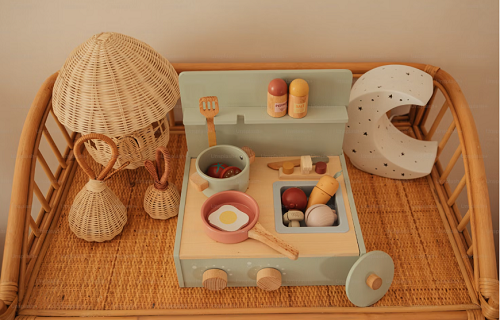DIY Wooden Kits for Kids

Title of Business: DIY Wooden Kits for Kids
Type: Production
Key Products for Sale:
DIY wooden kits children can assemble and paint, such as birdhouses, toy cars, and small furniture pieces.
Technology Considerations:
Basic woodworking tools and machinery for cutting and shaping wood.
Online presence for marketing and sales.
Use of social media platforms for promotion and engagement.
Market for the Products:
Parents and guardians looking for educational and creative toys for their children.
Schools and educational institutions interested in craft projects.
Gift shops and toy stores.
Online marketplaces.
Key Inputs into the Business:
- Materials: Wood pieces, nails, glue, sandpaper, paint, paintbrushes, and instruction manuals.
- Labor: Skilled labor for cutting and assembling the kits.
- Equipment: Saw, drill, sandpaper, packaging materials, and painting supplies.
- Other Resources: Marketing materials, website development, and shipping supplies.
Product Preparation Process:
- Designing Kits: Create designs for various DIY kits suitable for children.
- Cutting Wood: Use saws and drills to cut wood pieces according to the designs.
- Sanding and Finishing: Smooth edges and surfaces using sandpaper.
- Packaging: Pack pre-cut wood pieces, nails, glue, sandpaper, and instructions into kits.
- Marketing and Sales: Promote the kits through online and offline channels.
Quality Considerations:
Use high-quality, non-toxic wood and paint.
Ensure all pieces are sanded smooth to prevent splinters.
Provide clear and easy-to-follow instructions.
Test kits for ease of assembly and durability.
Cost of Investment:
- Materials and Initial Stock:
Wood: Ksh 3,000
Nails and Glue: Ksh 2,000
Sandpaper: Ksh 1,000
Paint and Brushes: Ksh 2,000
Packaging Materials: Ksh 2,000 - Equipment:
Saw and Drill: Ksh 3,000
Additional Tools and Safety Gear: Ksh 2,000 - Marketing and Website:
Social Media Ads: Ksh 1,500
Website Development: Ksh 1,500 - Labor:
Skilled Labor: Ksh 4,000
Total Estimated Capital Needed: Ksh 22,000
Required Operational Infrastructure:
- A small workshop space for cutting and assembling kits.
- Storage space for materials and finished products.
- An online platform for marketing and sales.
- Basic office supplies for administration.
Most Suitable or Viable Location for the Business:
A residential area with space for a small workshop.
Proximity to schools and local markets.
Good internet connectivity for online sales.
Potential Sources of Investment Capital:
- Personal savings.
- Family and friends.
- Small business loans from local banks or microfinance institutions.
- Grants or funding from local business development programs.
Requirements for Effective Management:
Strong organizational skills to manage production and inventory.
Marketing and sales skills to promote the business.
Customer service skills to handle inquiries and feedback.
Basic financial management for budgeting and accounting.
Role of Mobile Phone and ICT in the Business:
- Using social media platforms to promote products and engage with customers.
- Online sales through e-commerce platforms.
- Communication with suppliers and customers via phone and email.
- Digital payment solutions for ease of transactions.
Statutory Regulations and Licenses:
- Business registration with local authorities.
- Compliance with safety standards for children’s toys.
- Trademark registration for branding protection.
- Tax registration and compliance.
Pricing:
Individual kits priced between Ksh 500 – 1,500 depending on complexity and size.
Profitability:
High margins on individual kits due to the low cost of materials and high perceived value.
Potential for recurring sales through school projects and seasonal promotions.
Ability to scale by introducing new kit designs and expanding online sales.
Next Steps to Take:
- Finalize product designs and create prototypes.
- Source high-quality materials and set up the workshop.
- Develop a marketing plan and launch social media campaigns.
- Set up an e-commerce platform for online sales.
- Network with local schools and toy stores for potential bulk orders.
- Continuously gather feedback and improve product offerings.

